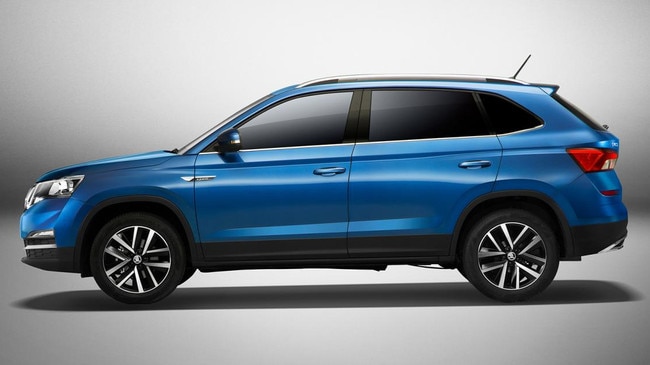
Engine: 1.0-litre turbo-petrol three-cylinder (85kW/200Nm)
Average fuel: 6.6 litres per 100km
Transmission: Seven-speed dual-clutch auto, front-wheel drive
Price: £21,980 (tba Australia, arrives July)
Rating: ★★★
-
We will get to the exciting Skoda Kamiq in good time, but first we must address the sorry saga of Britain’s so-called smart motorways – a government invention that has killed 38 people. This makes them nearly three times more deadly than the Yorkshire Ripper. We were sold the idea as a simple solution to the ever-increasing congestion problem, but I’m convinced that it was only ever a sinister Whitehall ploy to make money from traffic jams.
To try to make the plan look modern and woke, they told us that journeys would be completed more quickly if the hard shoulder were used when traffic was heavy, and that this would be good for the environment. And everyone bought into that, because anything that’s good for the environment is good, full stop. They also said the cost of building a new lane would be whatever the contractor said it was. Whereas the hard shoulder was already there. So why not use it?
A few doubting Thomases wondered what motorists would do if they had a mechanical problem. They were told that since British Leyland had gone west (or east, to be accurate) cars did not break down – or even get punctures. “So,” cried the smart motorway enthusiasts, “why provide a refuge lane for something that’s not relevant? It’s as daft as providing life jackets in an aeroplane.”
After a successful four-minute trial it was decided that smart motorways should be rolled out across the country. This meant that the M3, for example, had to be coned off and fitted with speed cameras so that, on the occasional days workers were there, they would not be run over. You may wonder why a workforce was necessary. And why the work took more than two years. Surely you’d just need one man to put up a sign saying, “Please use the hard shoulder.” But no. Because at this point we start to see the real reason behind the scheme. Gantries would be needed over the road every few hundred metres so that, when the hard shoulder was in use as a normal lane, motorists could be advised that the speed limit had been reduced, for no reason, to 50mph or even 40mph.
Simple logic dictates that if you widen a motorway, traffic can travel faster. So why, when you bring the hard shoulder into use, would you lower the speed limit? It makes no sense. Unless you put up speed cameras to catch motorists who have continued to pootle along at a perfectly reasonable 70mph.
We have been told the lower speed limit is necessary because it can be confusing for motorists when the hard shoulder is open, but this argument is plainly idiotic. We can surely drive a modern car with modern brakes and tyres down a smooth, well-maintained four-lane motorway at a relatively pedestrian 90mph. The authorities know we can. They know British motorways are among the safest roads in the world. So we have to assume the only reason they created smart motorways is so they could fit speed cameras to the gantries and tax those who have a life to live.
What makes it worse is that while the thieving bastards who dreamt up this harebrained scheme were down at the pub toasting their brilliance with a quart of kale soup, people in Peugeots were conking out on the smart motorway and being punted into the next life by a 40-tonne lorry full of Bulgarian wind-farm parts. Because while they’d run amok with cameras that can catch a car going too fast, they hadn’t fitted anywhere near enough cameras to spot a car that wasn’t moving at all. We were given the impression the smart motorways would be monitored 24 hours a day by some former US drone pilot who, using a bank of screens, would spot an obstruction and immediately flash warnings on the shiny new gantries that the lane ahead was blocked. What we got instead was some uninterested Herbert in a Portakabin who couldn’t see much of anything at all. Which means that, on average, it takes 17 minutes for an obstruction to be noted and another 17 minutes for emergency services to arrive. By which time the occupants of the Peugeot have been punted into the nearest tree.
Oh dear. I seem to have very little space left to write about the Skoda Kamiq. I’m delighted to say that the Kamiq SE L model I tested costs a relatively modest £21,980 and has an umbrella in a recess in the driver’s door and an LED torch in the boot. Certainly, the torch will be very useful should you ever break down at night on a smart motorway and need to run for your life.




Skoda Kamiq